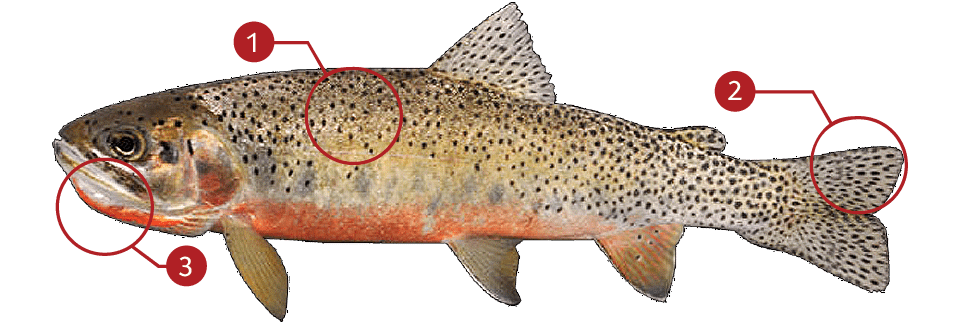CUTTHROAT TROUT
How to identify a Cutthroat Trout
This is a highly variable fish, in coloration and size. The characteristic that gave the cutthroat its name is the yellow, orange, or red streak in the skin fold on each side under the lower jaw. The color of the body ranges from cadmium blue and silvery (sea-run) to olive-green or yellowish green. There may or may not be red on the sides of the head, front part of the body, and the belly.
Where to catch Cutthroat Trout
They are known from the Eel River, California north to Prince William Sound, Alaska. Inland non-anadromous forms occur from southern Alberta, Canada to as far south as New Mexico, as far east as Colorado and most of Montana and west as far as Alberta and eastern California. A small, disjunct population which may have been transplanted to other locations, including the east coast of Quebec, Canada (1942), where it began to appear in anglers’ catches in 1966.
IDENTIFICATION

| |
Small black spots on head & body extending well below lateral line |
| |
Black spots found extensively on the tail fin |
| |
Yellow, orange, or red streak in the skin fold on each side under the lower jaw |
TARGET AREAS
|
|
Acknowledgements: We thank TAKEMEFISHING.org (www.takemefishing.org), Wisconsin Department of Natural Resources, Indiana Department of Natural Resources for their contributions to these FISH FACTS.

